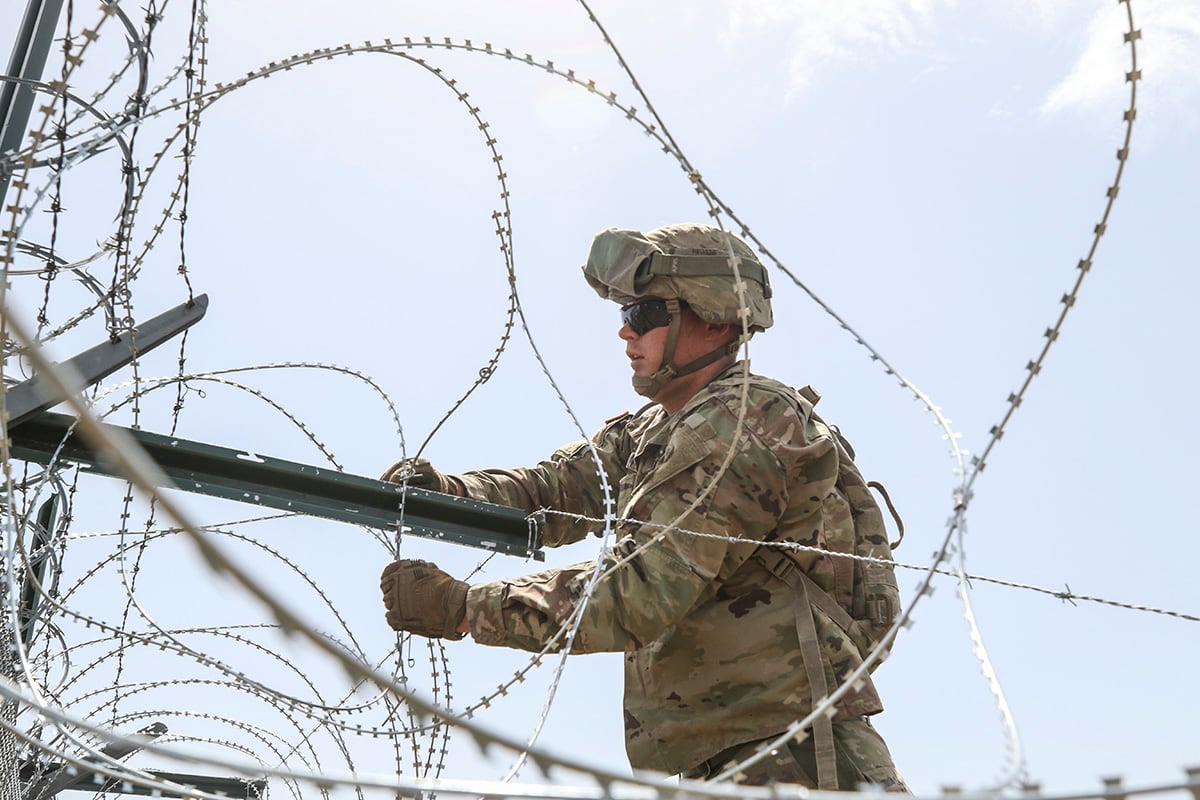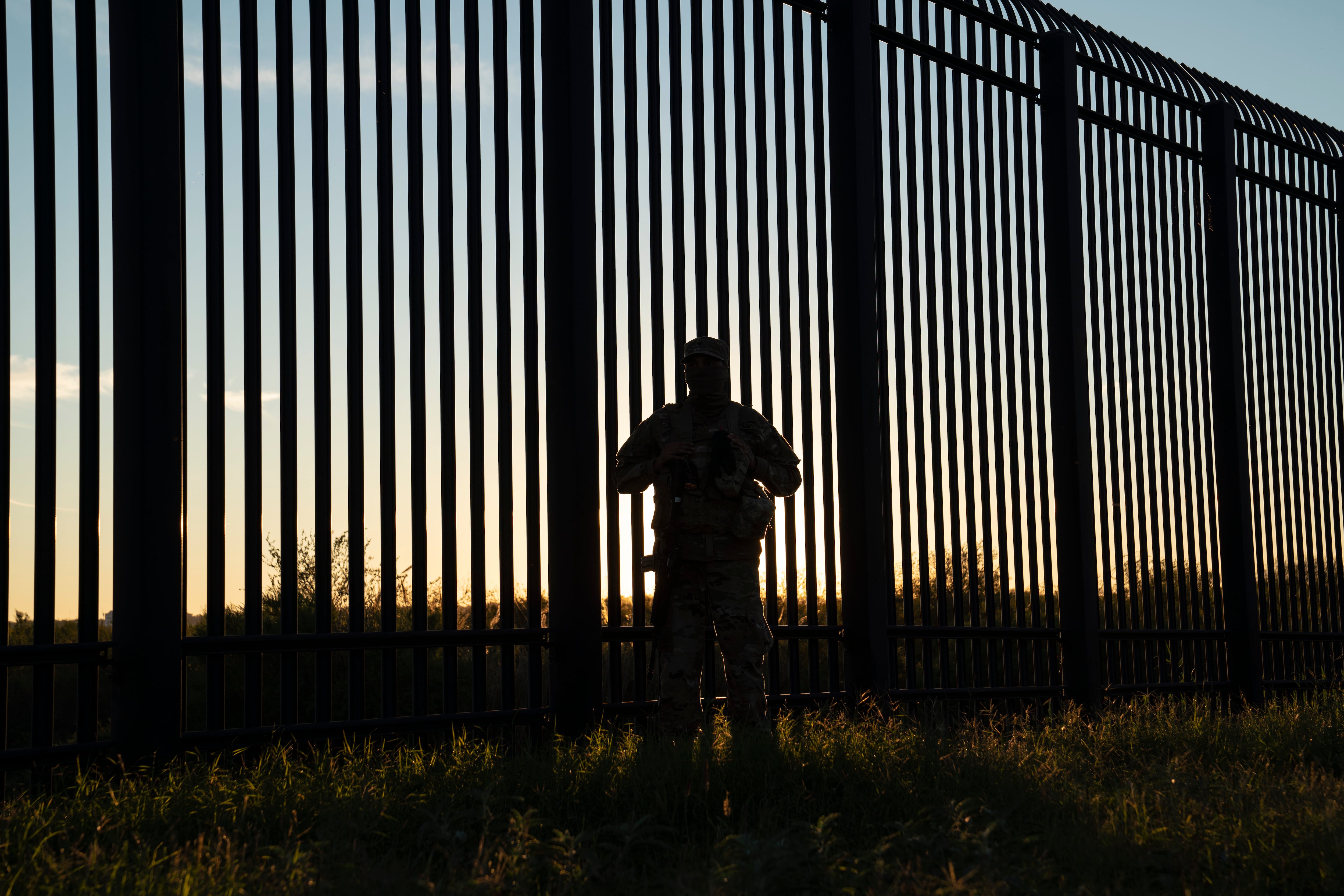Editor’s note: This story was updated at 2:45 p.m. EDT on May 2, 2023 with statements from the Homeland Security Department and a Pentagon spokesperson.
About 1,500 active duty troops will be deployed to the U.S. southern border to assist Homeland Security Department personnel in advance of an expected new wave of migrant crossing attempts later this month, according to officials close to the plan.
Homeland Security confirmed the news in an unsigned release Tuesday afternoon, saying that it requested the 1,500 troops for 90 days “due to an anticipated increase in migration.” Fox News first reported the mission on Tuesday morning.
The service members won’t handle law enforcement tasks and will instead try to “free up” border patrol agents, the release said, by focusing on “duties such as ground based detection and monitoring, data entry, and warehouse support.”
Air Force Brig. Gen. Pat Ryder, the Pentagon’s top spokesperson, also confirmed the pending deployment in a Tuesday afternoon statement.
Ryder emphasized that the mission “is consistent” with previous Defense Department deployments to the southwest border. He said the increase in troops is temporary “until [Customs and Border Protection] can address these needs through contracted support.”
Troops are expected to start arriving on May 10, Ryder told reporters during a briefing Tuesday. They will come from active duty Army and Marine Corps units, he added, but declined to name them.
The 1,500 active troops would join 2,500 National Guardsmen who are currently deployed to the border as part of a years-long mission.
RELATED

The deployment could potentially last longer than 90 days, Ryder confirmed. The Pentagon is looking at replacing them with reserve component troops or “contracted entities” at the end of that initial period, he said.
The orders come just a few days ahead of the expiration of certain coronavirus pandemic authorities to regulate border crossings into the United States. The national emergency regarding COVID-19 will end on May 11.
Homeland Security officials and outside advocates have warned that the changes could lead to a rush of migrants attempting to enter the country, particularly along the southern border.
Although the military has supported border security efforts in “every year since 2006,” according to Homeland Security, the ongoing major mission there has been underway since 2018. That year, former President Donald Trump ordered more than 5,000 troops to the region in response to immigration concerns.
Trump’s mission initially began with active duty troops, primarily from the Army, but later transitioned to mobilized National Guard members under the Pentagon’s control.
But under the Guard’s watch, the federally-controlled military border mission suffered from misconduct and leadership problems, exacerbated by undermanned leadership structures and problems getting equipment there, a December 2021 Military Times investigation found. The Pentagon is still yet to disclose the findings of a major investigation into those issues.
It’s not yet clear whether the same command overseeing the federally-mobilized Guard troops along the border — Joint Task Force North — will also gain control of the active duty forces.
The feds’ border deployment is separate from a state-led initiative ordered by Republican Texas Gov. Greg Abbott that began in March 2021. Approximately 4,500 members of the Texas National Guard are assigned to the mission, dubbed Operation Lone Star, which experienced its own endemic issues with pay, benefits and mental health, according to reports by Military Times and The Texas Tribune.
A small portion of the Texas National Guard troops, legally considered state employees on Operation Lone Star, have been arresting migrants there. One Texas soldier shot a migrant in January.
The Homeland Security statement emphasized a key difference between troops operating under Defense Department authority and those operating under state orders.
“DoD personnel have never, and will not, perform law enforcement activities or interact with migrants or other individuals in DHS custody,” the agency said.
Davis Winkie covers the Army for Military Times. He studied history at Vanderbilt and UNC-Chapel Hill, and served five years in the Army Guard. His investigations earned the Society of Professional Journalists' 2023 Sunshine Award and consecutive Military Reporters and Editors honors, among others. Davis was also a 2022 Livingston Awards finalist.
Leo covers Congress, Veterans Affairs and the White House for Military Times. He has covered Washington, D.C. since 2004, focusing on military personnel and veterans policies. His work has earned numerous honors, including a 2009 Polk award, a 2010 National Headliner Award, the IAVA Leadership in Journalism award and the VFW News Media award.
Meghann Myers is the Pentagon bureau chief at Military Times. She covers operations, policy, personnel, leadership and other issues affecting service members.





